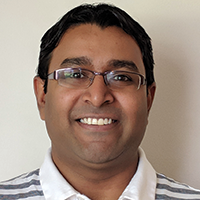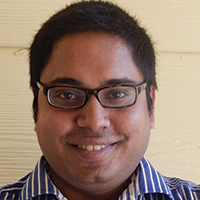Nontraditional Collaboration: A Success Story at JSM 2016
We have all heard the saying, “Teamwork makes the dream work.” Teamwork, or collaboration, is a key component of success in any business, and academic research is no exception.
Traditional academic collaborations are often intentional, formed by a defined team with a shared purpose and well-established rules and strategies. On the other end of the spectrum is the nontraditional collaboration. These are accidental and often emerge out of casual conversations in random places and, occasionally, out of curiosity. No matter what type it is, when a collaboration is successful, it produces a fruit all parties find edible.
One such fruitful (nontraditional) collaboration came together at JSM 2016 when a group of five early-stage statisticians decided to meet up over a cup of coffee with the sole purpose of reconnecting after a gap of more than six years. The team was comprised of three recent graduates (Broti Garai, Prithish Banerjee, and Shrabanti Chowdhury), one graduate student (Saptarshi Chatterjee), and one first-year postdoc (Himel Mallick).
This is an unusual collaboration strategy for young researchers to undertake, and they faced several barriers simultaneously. First and foremost, publishing in a top-tier statistical journal without an expert senior author is difficult. Second, there was no major funding support. Third, all project members had full-time commitments, mandating project duties only during nights and weekends.
As young researchers, it is certainly possible to successfully collaborate without an expert onboard. One should not underestimate the value of a casual conversation, especially in a venue like JSM, which can often (accidentally) lead to a successful collaboration. As an early-career scientist and statistician, it might be difficult to publish in top-tier statistical journals without a senior author, but it is not impossible. It is important to be open-minded about nontraditional collaboration opportunities, which can have rocky beginnings but happy endings.
Finally, there is one aspect that is common between nontraditional and traditional collaborations. A successful collaboration is not defined by the cool science only. Clearly stipulated roles for individual team members and a specified approach toward achieving the goal are as important as the science itself. It is, therefore, important to choose collaborators wisely and think carefully before making a commitment.
Despite all fears, the team decided to take the route less traveled and worked for more than a year to achieve the short-term and long-term goals of the project. “Although the progress was slow, it was not surprising given the nature of the collaboration, said Mallick. “Not having a formal deadline from a funding agency helped, so did the free availability of primary analytical and collaborative tools such as R, Slack, Dropbox, Google Docs, and GitHub, among others.”
The project faced additional obstacles when it came to publishing the research findings. A recent Proceedings of the National Academy of Sciences study concluded that single-blind reviewers are significantly more likely than their double-blind counterparts to recommend for acceptance from famous authors, top universities, and top companies. The experience was somewhat similar for the accompanying manuscript without a renowned name in the author list.
The initial draft was rejected from all the journals the team submitted it to. After surviving a few rounds of peer-review, the paper finally saw the light of the day when it was accepted by Statistics in Medicine, almost two months ago now. The published version of the paper is available.
But that didn’t happen without another setback the team had no experience dealing with. Statistics in Medicine initially rejected the paper despite positive comments from the reviewers. The team decided not to get bogged down by the rejection, but instead challenged the editor’s decision. It was a particularly daunting task for a young team to consider. “We did not think we would be successful, but we took a shot at the rebuttal letter,” said Mallick. “And to our surprise, our resubmission request was approved and the journey was smooth from that point onwards.”
The team took an unconventional approach to determining authorship credit. Co-first authorship is a tricky business in general and certainly not common in biostatistics. “We decided to break with tradition and have co-first authorship for all three authors who put in an equal amount of intellectual contribution,” said Mallick. “That was the most fair thing to do.”






















